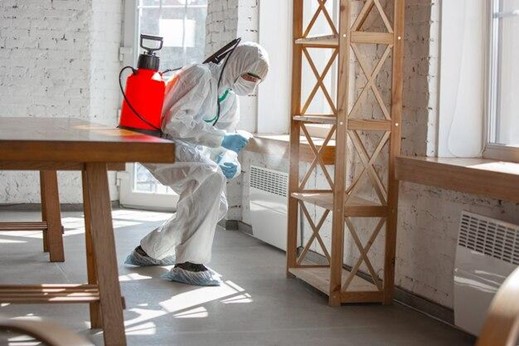Strata Pest Control: Best Practices

Managing a strata property effectively requires a keen eye for detail and a proactive approach, particularly in the realm of pest control. It’s a task that involves not only addressing current pest issues but also preventing future infestations to maintain a healthy living environment for everyone. At Pest Blaster, we’re well-versed in the nuances of strata pest management, and we’re here to share our insights. This article will explore the best practices in strata pest control, aimed at keeping your property in top-notch condition, free from unwanted guests.
Table of Contents
Key Takeaways:
- Regular Inspections: Frequent and thorough inspections are crucial.
- Integrated Pest Management: Utilise a combination of methods for effective control.
- Communication is Key: Keep residents informed and involved.
- Professional Expertise: Always rely on experienced pest control services.
- Preventative Measures: Focus on long-term prevention strategies.
Understanding Strata Pest Control
Strata properties, with their shared spaces and close living quarters, can be particularly susceptible to pest infestations. This makes proactive and comprehensive pest management strategies essential. Here are some key practices to consider:
1. Regular Inspections
- Frequency is Key: Regular pest inspections are crucial. Experts recommend at least bi-annual inspections to identify potential issues early.
- Professional Eye: Utilising professional services, like those offered at Pest Blaster, ensures a thorough examination.
2. Integrated Pest Management (IPM)
- Beyond Chemicals: IPM focuses on long-term prevention, using a combination of techniques like habitat manipulation and biological control.
- Resident Education: Educating residents about prevention methods is part of effective IPM. This includes proper food storage and waste management.
3. Tailored Solutions
- Unique Needs: Each strata property is unique. Customised solutions, considering factors like property layout and local pest species, are vital.
- Expert Advice: Consulting with professionals, such as Pest Blaster, can provide tailored strategies.
4. Safe and Sustainable Practices
- Health First: Using safe, non-toxic methods is crucial, especially in shared living spaces.
- Sustainability: Opt for environmentally friendly methods where possible.
5. Communication and Cooperation
- Stay Informed: Regular communication with residents about pest control measures is important.
- Team Effort: Encourage residents to report pest sightings promptly.
Common Challenges in Strata Pest Control
Managing pests in a strata setting can be tricky due to factors like:
- Shared Spaces: Common areas like laundries and gardens can be hotspots for pests.
- Individual vs Collective Responsibility: Balancing the responsibilities between individual unit owners and the strata management can be complex.
Pest Blaster’s Approach to Strata Pest Control
At Pest Blaster, we offer:
- Customised Plans: Tailored to your specific strata needs.
- Expert Team: Our professionals are trained in the latest pest control techniques.
- Ongoing Support: We provide continuous monitoring and support.
Tailoring Pest Control to Different Strata Environments
Strata properties come in various forms – from high-rise apartments to townhouse complexes. Each type presents unique challenges in pest control:
High-Rise Apartments
- Vertical Spread: Pests like cockroaches and bed bugs can easily spread between floors.
- Solution: Focus on individual unit treatments along with common areas like garbage chutes and basements.
Townhouse Complexes
- Outdoor Exposure: These properties often have more exposure to outdoor pests like rodents and ants.
- Solution: Regular perimeter treatments and educating residents about outdoor hygiene can be effective.
Mixed-Use Developments
- Diverse Environments: Properties with both residential and commercial spaces, like cafes or gyms, can attract a wide range of pests.
- Solution: Implementing specific strategies for different types of spaces within the same complex is crucial.
Proactive Measures in Strata Pest Control
Prevention is better than cure, especially in strata pest control. Here are some proactive steps:
Regular Maintenance Checks
- Seal Entry Points: Regularly check and seal any cracks or holes in the building’s exterior.
- Drainage Systems: Ensure all drainage systems are functioning properly to prevent standing water, which can attract pests.
Landscaping and Outdoor Areas
- Trim Vegetation: Keep shrubs and trees trimmed to avoid contact with buildings.
- Waste Management: Ensure garbage areas are clean and bins are sealed.
Resident Education and Engagement
- Information Sessions: Hold regular meetings or distribute newsletters to educate residents about pest prevention.
- Feedback System: Establish a system for residents to report pest issues promptly.
The Role of Technology in Strata Pest Control
Advancements in technology are revolutionising pest control strategies:
Digital Monitoring Systems
- Smart Traps: Utilise traps that send alerts when a pest is captured, allowing for quick response.
- Remote Monitoring: Implement systems to monitor pest activity levels in real-time.
Data-Driven Decisions
- Trend Analysis: Utilise data collected from inspections and monitoring to identify trends and predict potential outbreaks. This approach not only helps in addressing current issues but also in foreseeing and mitigating future challenges. For more insights into how data influences modern pest management strategies, check out our detailed discussion on the latest trends in commercial pest management.
- Customised Strategies: Tailor pest control programs based on historical data and predictive analytics. By analysing past patterns and current data, we can develop more effective, targeted approaches that address the specific needs of your strata property.
The Importance of Choosing the Right Pest Control Partner
Selecting a competent pest control service is critical in strata management. Here’s what to look for:
Credentials and Experience
- Licensed Professionals: Ensure the company has licensed and trained technicians.
- Strata Experience: Look for a company with specific experience in strata properties, like Pest Blaster.
Comprehensive Service Offerings
- Full Range of Services: Choose a company that offers a wide range of pest control services.
- Customised Plans: Ensure they provide plans tailored to your specific needs.
Commitment to Safety and Sustainability
- Safe Practices: The company should use safe, non-toxic methods, especially in common areas.
- Eco-Friendly Options: Look for services that offer environmentally friendly pest control solutions.
The Impact of Climate Change on Pest Control in Strata
Climate change is altering pest behaviours and patterns, making effective control more challenging:
Changing Pest Behaviours
- Extended Seasons: Warmer temperatures can lead to longer breeding seasons for pests.
- New Pests: Changing climates can introduce new pests to areas.
Adapting Pest Control Strategies
- Stay Informed: Keep up-to-date with the latest research on climate change and pest patterns.
- Flexible Approaches: Be prepared to adapt pest control strategies as pest behaviours change.
Building a Community Approach to Pest Control
Creating a community-focused approach can enhance the effectiveness of pest control in strata properties:
Regular Communication
- Newsletters and Notices: Keep residents informed about pest control schedules and tips.
- Community Meetings: Hold regular meetings to discuss pest control strategies and gather feedback.
Involving Residents
- Pest Awareness Campaigns: Run campaigns to educate residents about preventing pest infestations.
- Resident Committees: Consider forming a committee to focus on pest control and cleanliness initiatives.
Future Trends in Strata Pest Control
Staying ahead of the curve is essential in pest management. Emerging trends include:
Advanced Biological Controls
- Natural Predators: Utilising natural predators or biological agents to control pest populations.
- Phenomenon like Pheromone Traps: Using pheromones to attract and trap pests.
AI and Machine Learning
- Predictive Analytics: Using AI to predict and prevent pest infestations.
- Automated Systems: Implementing automated pest monitoring and control systems.
Conclusion
Effective strata pest control is a blend of professional expertise, regular maintenance, and community cooperation. At Pest Blaster, we’re committed to providing top-notch pest control solutions for your strata property. Don’t let pests be a thorn in your side; get in touch with us today for a pest-free tomorrow.
Frequently Asked Questions
Strata pest control involves managing and preventing pest infestations in strata-titled properties, which include shared spaces and multiple units.
It’s recommended to have at least bi-annual pest inspections. However, this may vary depending on the property and the extent of past infestations.
Responsibility can vary. Generally, strata management is responsible for common areas, while individual owners may be responsible for their units. It’s important to check your strata agreement.
While residents can take preventive measures, professional pest control is recommended for comprehensive and safe management, especially in common areas.
Common pests include cockroaches, rodents, termites, and ants. Each pest requires a specific management approach.
Pest Blaster offers customised pest control solutions, regular inspections, and expert advice tailored to the unique needs of strata properties.


